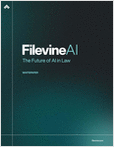In recent years, law schools have promoted federal debt forgiveness programs as a solution to rising student loan obligations. In some important ways, they are. Income-based repayment (IBR) can be a lifeline in a drowning pool of educational debt. It can also open up less remunerative options, including public interest law, for those willing to forgo big bucks to avoid big law firms. But now everyone seems surprised to realize that, when all that debt is forgiven years hence, someone will have to pick up the tab.
Well, not quite everyone is surprised. More than two years ago, Professor WIlliam Henderson, one of the profession’s leading observers, saw this train wreck coming: “Unless the government’s actuarial assumptions on student loan repayments turn out to be correct,” Henderson wrote, “federal funding of higher education is on a collision course with the federal deficit.”
Tuition Increases Without Regard to Value Added
Recently, The Wall Street Journal made that collision a front-page story. In “ Plans That Forgive Student Debt Skyrocket,” law students took center stage—and for good reason. For a decade, newly minted lawyers have outpaced everyone, even medical students, with respect to the rate at which they are accumulating educational debt.
As Am Law Daily columnist Matt Leichter has reported, private law school tuition grew at an annual rate of almost 3.5 percent from 1998 to 2008, compared with 1.89 percent for medical schools and 2.85 percent for undergraduate colleges. Public law school tuition increased at an even faster pace: 6.71 percent. And as the recent Wall Street Journal article noted, from 2008 to 2012, median law school debt for new graduates increased by 54 percent—from $83,000 to $128,000. (That compares with a 22 percent increase in medical student debt.)
Market Disconnects
What accounts for the law school tuition explosion? For starters, the U.S. News rankings methodology gives deans and administrators an incentive to spend money without regard to the beneficial impact on a student’s education. More expenditures per student mean a higher ranking, period.
Who provides that money? Students—most of whom obtain federally backed loans. To that end, the prevailing law school business model requires filling classrooms. As transparency about dismal law graduate employment outcomes has begun to produce fewer applications at most schools, deans generally have responded by increasing acceptance rates. The overall rate for all law schools rose from 56 percent in 2004 to almost 80 percent in 2013.
Sell, Sell, Sell
As National Law Journal reporter Karen Sloan observed recently, “ It’s a tale of two legal education worlds.” Top law schools place 90 percent of their graduates; but “more than three-quarters of ABA-accredited law schools—163—had underemployment rates of 20 percent or more.”
Those numbers begin to explain what has now become an annual springtime ritual. As I’ve discussed in recent posts, many law school professors and deans at schools producing those underemployed graduates are proclaiming that the lawyer glut is over. Now, they say, is the best time ever to attend law school.
Outside the ivory tower, practicing lawyers know that such hopeful rhetoric isn’t transforming the market or slowing the profession’s structural changes. Last June, NALP executive director James Leipold wrote, “There are no indications that the employment situation will return to anything like it was before the recession.”
The most recent ABA employment statistics for the class of 2013 prove Leipold’s point: Nine months after graduation, only 57 percent had obtained long-term full-time jobs requiring a JD. Median incomes for new graduates aren’t improving much, either. For the class of 2008, it was $72,000; for the class of 2012, it was $61,245.
IBR to the Rescue
The vast majority of students borrow six-figure sums to fund their legal education. The federal government backs the loans, which survive bankruptcy. The end result is law schools with no financial skin in a game for which they reap tremendous economic rewards.
IBR is a godsend to many new lawyers who can’t get jobs that pay enough to cover their loans. It permits monthly installments totaling 10 percent of discretionary income (defined as annual income above 150 percent of the poverty level). Outstanding balances are forgiven after 10 years; for private-sector workers, it’s 20 years.
Less Obvious Consequences
IBR has a dark side, too. If a person leaves the program early, total debt will include all accrued interest and principal, often creating a balance larger than the original loans. For those remaining in the program for the requisite 10 or 20 years, forgiven debt becomes taxable income due in the year forgiven.
More insidiously for the profession, IBR allows marginal schools to exploit an already dysfunctional market. Such schools are free to ignore the realistic job prospects for their graduates (including J.D.-required public service positions) as they recruit new students who obtain six-figure loans to pay tuition. When graduates can’t get decent jobs, it’s not the school’s problem. Meanwhile, IBR becomes the underemployed young lawyer’s escape hatch.
The Wall Street Journal reports that graduates are using that hatch in dramatically increasing numbers: “Enrollment in the [IBR] plans has surged nearly 40 percent in just six months, to include at least 1.3 million Americans owing around $72 billion.” Those figures aren’t limited to lawyers, but they undoubtedly include many young graduates from law schools that should have closed long ago.
Bill Henderson probably finds some measure of vindication as a wider audience now frets over a problem that he foresaw years ago. But I know him well enough to believe that for him, like me, four of the least satisfying words in the English language are: “I told you so.”
Steven J. Harper is an adjunct professor at Northwestern University and author of “The Lawyer Bubble: A Profession in Crisis” (Basic Books, April 2013) and other books. He retired as a partner at Kirkland & Ellis in 2008, after 30 years in private practice. His blog about the legal profession, The Belly of the Beast, can be found at http://thebellyofthebeast.wordpress.com/. A version of the column above was first published on The Belly of the Beast.






